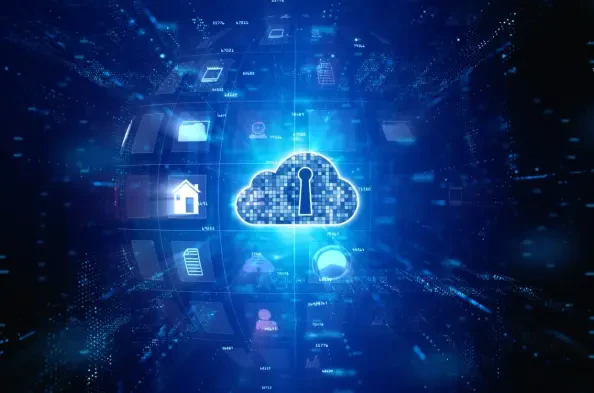Vernon Yai, a seasoned expert in data protection, is known for his in-depth knowledge of privacy protection and data governance, as well as his innovative approaches to risk management. In light of the recent cyberattack on Commvault’s Azure cloud environment, we turn to Vernon for insights into what happened, the immediate response, and future preventative measures.
Can you explain what happened during the recent cyberattack on Commvault’s Azure cloud environment?
The cyberattack on Commvault involved a sophisticated breach exploiting a zero-day vulnerability. This means the attackers discovered and exploited a security flaw before the vendor had any knowledge of it. The breach underscores the increasing risks cloud service providers face, particularly from suspected nation-state actors, which adds a layer of complexity and urgency to the issue.
How did Commvault become aware of the unauthorized activity in its Azure cloud environment?
Commvault was alerted by Microsoft on February 20, 2025, about unauthorized activity within their Azure cloud setup. This kind of alert from a trusted vendor like Microsoft is crucial because it allows the affected company to act swiftly and reduce potential damage.
What immediate steps did Commvault take after discovering the cyberattack?
Upon discovery of the cyberattack, Commvault activated its incident response protocols, which involved engaging top-tier cybersecurity experts and collaborating with law enforcement. These steps are vital in containing the breach and beginning an in-depth investigation to understand and mitigate the impact.
Who were the cybersecurity experts engaged by Commvault, and what role did they play in responding to the attack?
Although specific names were not disclosed, Commvault engaged high-caliber cybersecurity professionals who specialize in forensic analysis and incident response. These experts play a crucial role in identifying the breach’s extent, understanding the attacker’s methods, and helping patch vulnerabilities to prevent further incidents.
How many customers were affected by the breach, and how did Commvault assist them?
The breach impacted a small number of customers. Commvault promptly contacted those affected to offer assistance, ensuring they had all necessary information and support to secure their data and prevent future issues.
Was there any evidence of data compromise within Commvault’s customer base due to this incident?
Commvault’s investigation revealed no evidence of customer data being accessed or compromised. This finding is significant and speaks to the company’s ability to safeguard its customer data even in the face of sophisticated threats.
Did the cyberattack impact Commvault’s business operations or its ability to deliver products and services?
Commvault confirmed that despite the breach, its business operations and ability to deliver products and services remained unaffected. This outcome highlights the resilience and preparedness built into their operational protocols.
What details can you share about the zero-day vulnerability that was exploited in the attack?
The zero-day vulnerability was an undisclosed flaw within Commvault’s Azure cloud environment that the attackers managed to exploit before it was identified by the company. Such vulnerabilities are particularly challenging because they can exist undetected until exploited.
How quickly was Commvault able to patch the vulnerability after it was discovered?
Upon identifying the exploit, Commvault quickly developed and deployed a patch. They took the extra step of urging their software users to apply the update immediately, which is crucial in safeguarding against subsequent attacks exploiting the same vulnerability.
What recommendations did Commvault give to its software users following the incident?
Commvault strongly encouraged its users to apply the update addressing the vulnerability and advised additional security measures such as rotating impacted credentials. These recommendations are aimed at ensuring ongoing protection and reducing the risk of similar future incidents.
Can you describe what measures Commvault is taking to strengthen its security defenses after the breach?
Commvault is actively working on rotating credentials of impacted accounts and strengthening its overall security defenses. This involves enhancing its detection capabilities and refining their response protocols to better identify and mitigate threats early.
How is Commvault collaborating with law enforcement to aid in the investigation and prevent future attacks?
Commvault is maintaining a close partnership with law enforcement agencies. This collaboration is geared towards supporting an on-going investigation to identify the perpetrators and gather intelligence that could help prevent similar attacks in the future.
Why does Commvault believe it is important to share information about cyberattacks with the tech community?
Commvault’s stance is that no company is immune to cyberattacks, and sharing information fosters collective resilience. They believe that transparency and collaboration can drive innovation and preparedness across the entire cybersecurity landscape, making the community stronger against similar threats.
How did Microsoft assist Commvault during this incident?
Microsoft’s timely alert about the unauthorized activity was instrumental in Commvault’s rapid response. This proactive communication is a testament to the importance of vendor partnerships in maintaining robust cloud security.
What message would Commvault like to convey to its customers regarding this event?
Commvault wishes to thank its customers for their trust and cooperation during the incident. They aim to reassure customers of their commitment to data protection and emphasize the effectiveness of their protocols in safeguarding sensitive information.
How does Commvault plan to improve its cybersecurity measures moving forward?
Moving forward, Commvault is focusing on enhancing their security infrastructure by integrating more advanced detection tools and refining their response mechanisms, ensuring they remain vigilant and prepared against future threats.






